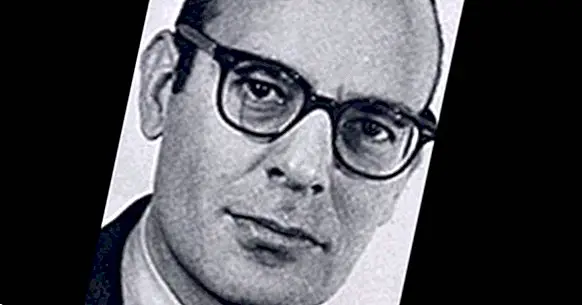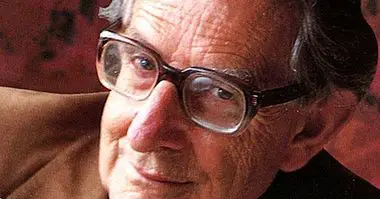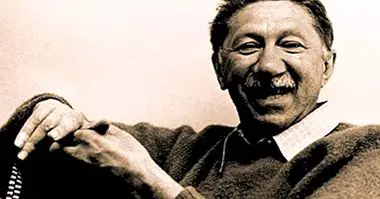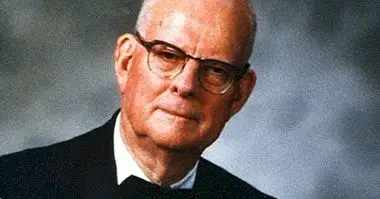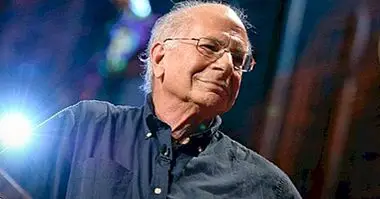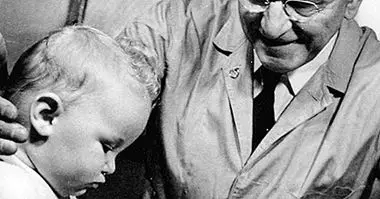Stanley Schachter: biography of this psychologist and researcher
Our emotions are internal forces that continuously affect our behavior and perception, but whose exact functioning has been a great unknown throughout history. This has generated many researchers have tried to offer a scientific explanation of why and when an emotion arises, there being a variety of theories in this regard.
One of them is the one Stanley Schachter did with Jerome Singer, the first of them being an important psychologist specialized in social psychology. In order to better understand his work, it may be useful to know a little more about the life of this author. That is why throughout this article we will see a short biography of Stanley Schachter .
- Related article: "History of Psychology: authors and main theories"
The life of Stanley Schachter: a biography
The birth of Stanley Schachter occurred on April 15, 1922 in Flushing, New York. Coming from a family of Jews of Romanian origin, he was the son of Nathan Schacter and Anna Fruchter. Since childhood he was curious and capable, eager to learn and when he was something older expressing the desire to study at the university.
Academic training and war
Once finished his secondary education the young Schachter proceeded to enroll in the University of Yale, entering to study history of art. He graduated in that career in 1942 and after finishing it He made the decision to also do a master's degree in psychology apparently closer to their interests and able to work on social problems. In this sense he was deeply influenced by Clark Hull and his theory of learning. He obtained the master's degree in 1944.
At that time the Second World War was in full swing, and once his master Schachter finished he enlisted in the army, where he would be promoted to sergeant and in which his main role would be to work studying the visual problems of the pilots in the biophysics division of the aero-medical laboratory. His military service ended two years later, in 1946.
Doctorate
Later and during the same year the American psychologist he signed up to do a research doctorate at MIT with Kurt Lewin , pretending to focus on the theories related to social psychology and especially the behavior of groups within the Research Center for Group Dynamics. There he would meet those who would end up being great authors, like Festinger, but unfortunately only one year later his teacher passed away. The death of Lewin caused the center to close the project and all the students had to find another center.
After some time looking for Schachter, he was accepted to continue his training at the Institute for Social Research at the University of Michigan. There he would return to work with Festinger, who in fact became his mentor , and next to him he studied social influence and human communication.
He finished his doctorate in 1949, with a thesis regarding the treatment provided by the members of a group to the existence of divergences regarding the majority opinion.
- Maybe you're interested: "Kurt Lewin and Field Theory: the birth of social psychology"
Start of working life
Based on his work during the PhD, the University of Minnesota offered him his first job as an assistant professor in the department of social relations research . Little by little he would be promoted in the ranks, becoming associate professor in 54 and full professor in 1958.
At this time he continued his research regarding the relationships and behavior of the groups and developing different works, regarding social communication and pressure within the groups. I would also end up writing, together with Festinger and Riecken, the publication "When the prophecy fails", in which we studied the case of a group with apocalyptic beliefs that, despite the evidence against them, maintained their beliefs regarding the imminent destruction of the world. This made the author interested even more in the power of social influence , something that made him investigate further and produce various publications, which earned him interesting prizes and prestige. A total of twelve years would remain in his post.
However, in 1961 he was hired by Columbia University as a professor of psychology. That same year he married Sophia Duckworth , with whom he would end up having a son in 1969. He would occupy the position until 1992. It would be during this period that he would carry out some of his most outstanding contributions.
Great investigations
First, he worked on elements such as the effects of birth order on siblings or the reaction and sensitivity of the obese population to food stimuli (they eat more if the food can be obtained easily). He was also interested in the physiological reactions to the stimuli, and little by little an interest in understanding and investigating the functioning and origin of the emotions and the physical reactions that accompany them was born. Other relevant investigations would be those related to substances , especially in the case of habituation and dependence on tobacco.
But undoubtedly his best-known contribution is the one he made in the late sixties, when he would come into contact and begin to collaborate with Jerome Singer and other authors in order to find out how we experience emotions.
In what would become the largest and best known work of both authors, Singer and Schachter would come to the conclusion that the emotion is the result of the presence of an internal mental activation at the physiological level and a series of processes with which we try to name and recognize the activation in question.
For these authors the emotion felt would come after the physiological reaction, that is to say that first the body presents activation and then our mind grants to said activation a meaning or sense based on the situation and previous experience. This implies that emotion is no more than the labeling at the conscious level of the interpretation of our physical and mental activity.
Last years and death
Schachter remained at his post and doing various research the rest of his life until 1992. At that time he would cease his relationship with the University of Minnesota. A few years later the author discovered that he was suffering from a malignant tumor: colon cancer . The death came to Schachter on June 7, 1997, when the cancer ended with him at his home in New York.
Schachter's legacy is great. While among the population is probably not one of the best known names, the truth is that it is among some of the most recognized authors especially at the level of study on emotions. In addition, the diversity of his research makes him think of him as one of the precursors of health psychology.
Bibliographic references:
- Nisbett, R.E. (2000). Stanley Schachter 1922-1997. Biographical Memoirs, 78. National Academy of Sciences. The National Academy Press. Washington, D.C.

